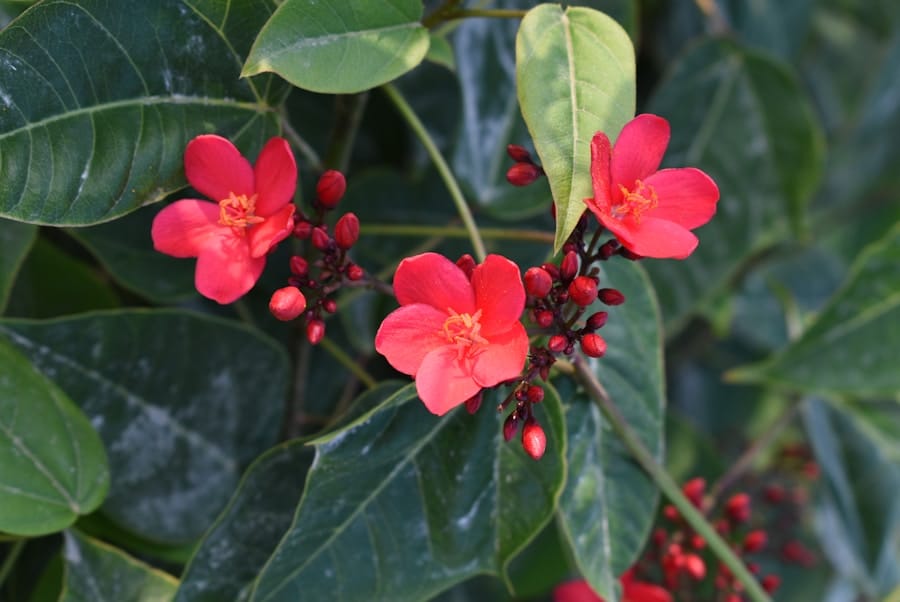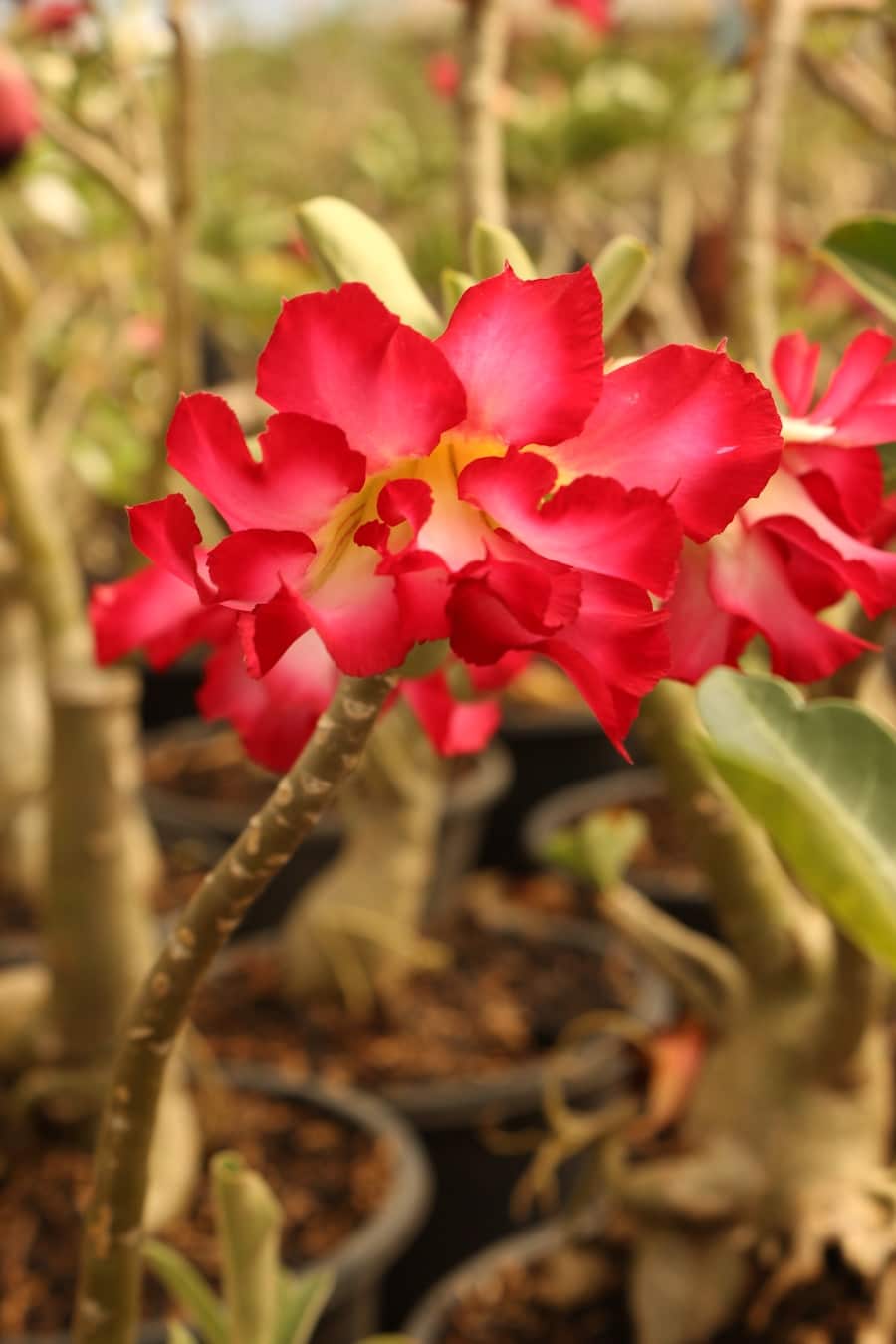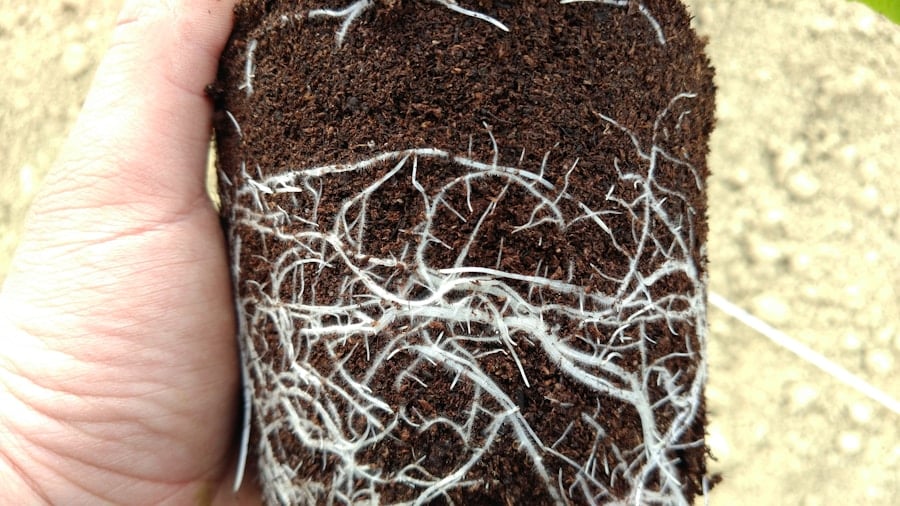The Crown of Thorns plant, scientifically known as Euphorbia milii, is a succulent shrub native to Madagascar. This hardy plant is characterized by its thick, fleshy stems and vibrant flowers, which can range in color from red to yellow and pink. The plant derives its name from the crown of thorns worn by Jesus Christ, as its stems are adorned with sharp spines that can easily prick the skin.
Crown of Thorns is not only visually striking but also possesses a remarkable ability to thrive in arid conditions, making it a popular choice for both indoor and outdoor gardens. Crown of Thorns is a member of the Euphorbiaceae family, which includes a wide variety of plants, some of which are known for their medicinal properties. The sap of the Crown of Thorns plant is milky and can be toxic if ingested, so caution should be exercised when handling it.
Understanding the specific needs of the Crown of Thorns is essential for promoting healthy growth and ensuring that it flourishes in its environment. Soil Compost can greatly benefit from the use of organic fertilizers, for more information visit Soil Compost Fertilizers.
Key Takeaways
- The Crown of Thorns plant is a succulent that is native to Madagascar and is known for its colorful flowers and thorny stems.
- Using fertilizer is important for promoting healthy growth and blooming in Crown of Thorns plants, as it provides essential nutrients that may be lacking in the soil.
- When choosing a fertilizer for your Crown of Thorns, opt for a balanced, water-soluble fertilizer with a higher phosphorus content to encourage flowering.
- Fertilize your Crown of Thorns every 2-4 weeks during the growing season, and reduce frequency during the winter months when the plant is dormant.
- When applying fertilizer, dilute it to half the recommended strength and water the plant thoroughly to prevent burning the roots.
- Signs of over-fertilization in Crown of Thorns include yellowing leaves, stunted growth, and leaf drop, so it’s important to follow the recommended fertilization guidelines.
- To promote healthy growth in your Crown of Thorns, provide ample sunlight, well-draining soil, and avoid overwatering to prevent root rot.
- Frequently asked questions about fertilizing Crown of Thorns include the best time to fertilize, the type of fertilizer to use, and how to revive an over-fertilized plant.
The importance of using fertilizer for Crown of Thorns
Fertilization plays a crucial role in the overall health and vitality of the Crown of Thorns plant. While these plants are relatively low-maintenance and can survive in less-than-ideal conditions, providing them with the right nutrients can significantly enhance their growth and flowering potential. Fertilizers supply essential macro and micronutrients that may be lacking in the soil, particularly in potted plants where nutrient depletion can occur more rapidly.
By incorporating fertilizer into your care routine, you can help your Crown of Thorns achieve its full potential. Moreover, fertilization can stimulate blooming, which is one of the most attractive features of the Crown of Thorns. A well-fed plant is more likely to produce an abundance of flowers, creating a stunning display that can brighten any space.
Additionally, proper fertilization can improve the plant’s resilience against pests and diseases, as a healthy plant is better equipped to fend off environmental stressors. Therefore, understanding the importance of fertilizer in the care of your Crown of Thorns is vital for achieving a thriving and visually appealing specimen.
Choosing the right type of fertilizer for your Crown of Thorns

Selecting the appropriate fertilizer for your Crown of Thorns involves understanding its specific nutritional needs. A balanced fertilizer with an N-P-K ratio (nitrogen, phosphorus, potassium) suitable for flowering plants is often recommended. A common choice is a 10-10-10 or 20-20-20 liquid fertilizer, which provides equal parts of these essential nutrients.
Nitrogen promotes healthy foliage growth, phosphorus encourages blooming, and potassium supports overall plant health and disease resistance. In addition to balanced fertilizers, slow-release granules can also be beneficial for Crown of Thorns. These fertilizers gradually release nutrients over time, reducing the risk of over-fertilization and providing a steady supply of nourishment.
Organic options such as compost or well-rotted manure can also be effective, as they improve soil structure while supplying essential nutrients. When choosing a fertilizer, consider the specific conditions in which your Crown of Thorns is growing, including soil type and light exposure, to ensure you select a product that meets its needs.
When and how often to fertilize your Crown of Thorns
| Fertilization Schedule | Type of Fertilizer | Frequency |
|---|---|---|
| Spring and Summer | Balanced liquid fertilizer (10-10-10) | Every 2 weeks |
| Fall and Winter | High-phosphorus liquid fertilizer (5-10-5) | Once a month |
Timing and frequency are critical factors when it comes to fertilizing your Crown of Thorns. Generally, the best time to fertilize is during the growing season, which typically spans from spring to early fall. During this period, the plant is actively growing and will benefit most from additional nutrients.
Fertilizing every four to six weeks during this time can help promote robust growth and flowering. However, it’s essential to adjust this schedule based on your specific growing conditions; for instance, if your plant is indoors with less light exposure, it may require less frequent feeding. In contrast, during the dormant winter months, fertilization should be significantly reduced or even halted altogether.
The plant’s metabolic processes slow down during this time, and it does not require the same level of nutrients as it does in the growing season. Over-fertilizing during dormancy can lead to nutrient buildup in the soil, which can harm the plant’s roots. Therefore, understanding when to fertilize is just as important as knowing how often to do so.
Applying fertilizer to your Crown of Thorns
When it comes to applying fertilizer to your Crown of Thorns, there are several methods you can use depending on the type of fertilizer chosen. For liquid fertilizers, dilution according to package instructions is crucial; typically, this involves mixing a specific amount with water before application.
For granular fertilizers, sprinkle the recommended amount evenly around the base of the plant, taking care not to let it come into direct contact with the stems or leaves. After application, water thoroughly to help dissolve the granules and facilitate nutrient absorption by the roots. Regardless of the method used, always monitor your plant’s response after fertilization; healthy growth should follow if done correctly.
Signs of over-fertilization and how to avoid it

Over-fertilization can be detrimental to your Crown of Thorns and may manifest in several ways. One common sign is leaf burn, where the tips or edges of leaves turn brown and crispy due to excess salts accumulating in the soil. Additionally, yellowing leaves may indicate that the roots are struggling to absorb water due to nutrient overload.
In severe cases, over-fertilization can lead to root rot as a result of poor drainage caused by compacted soil filled with excess nutrients. To avoid over-fertilization, it’s essential to follow recommended guidelines regarding frequency and dosage carefully. Conducting regular soil tests can also help determine nutrient levels and inform your fertilization strategy.
If you suspect over-fertilization has occurred, flushing the soil with water can help leach out excess salts and restore balance. This process involves watering thoroughly until water drains from the bottom of the pot; however, it should be done cautiously to avoid waterlogging.
Other tips for promoting healthy growth in your Crown of Thorns
In addition to proper fertilization practices, several other factors contribute to promoting healthy growth in your Crown of Thorns plant. Light exposure is paramount; these plants thrive in bright, indirect sunlight but can also tolerate direct sunlight for several hours each day. Insufficient light can lead to leggy growth and reduced flowering potential.
Therefore, positioning your plant near a south or west-facing window is often ideal. Watering practices also play a significant role in maintaining plant health. Crown of Thorns prefers to dry out between waterings; thus, it’s crucial to allow the top inch or two of soil to dry before re-watering.
Overwatering can lead to root rot and other issues associated with excess moisture. Additionally, ensuring that your pot has adequate drainage holes will help prevent water accumulation at the bottom.
Frequently asked questions about fertilizing Crown of Thorns
Many enthusiasts have questions regarding the fertilization process for their Crown of Thorns plants. One common inquiry revolves around whether organic fertilizers are preferable over synthetic options. While both types can be effective when used correctly, organic fertilizers often improve soil health over time by enhancing microbial activity and improving soil structure.
Another frequently asked question pertains to whether fertilization is necessary for newly planted specimens. While established plants benefit significantly from regular feeding, newly planted Crown of Thorns may not require immediate fertilization if they are placed in nutrient-rich soil. It’s generally advisable to wait until they show signs of new growth before introducing fertilizer into their care regimen.
Understanding these aspects will empower you as a gardener to provide optimal care for your Crown of Thorns plant while ensuring it remains healthy and vibrant throughout its life cycle.
If you are looking for more information on fertilizing your crown of thorns plant, you may want to check out this article on Chiku’s Garden website. The article provides helpful tips and recommendations for fertilizing your crown of thorns to ensure it thrives and blooms beautifully. Additionally, you may also be interested in learning about growing perennial sunflowers in your garden, which can complement your crown of thorns plant. Check out this informative guide on Chiku’s Garden for more insights.
FAQs
What is the best fertilizer for crown of thorns plants?
The best fertilizer for crown of thorns plants is a balanced, water-soluble fertilizer with an N-P-K ratio of 20-20-20. This will provide the necessary nutrients for healthy growth and flowering.
How often should crown of thorns plants be fertilized?
Crown of thorns plants should be fertilized every 2-4 weeks during the growing season, which is typically spring and summer. Fertilizing during the dormant season is not necessary.
Can I use organic fertilizer for my crown of thorns plant?
Yes, organic fertilizers can be used for crown of thorns plants. Look for a balanced organic fertilizer with an N-P-K ratio of 20-20-20 or similar.
Should I dilute the fertilizer before applying it to my crown of thorns plant?
Yes, it is recommended to dilute the fertilizer to half strength before applying it to your crown of thorns plant. This will prevent the risk of over-fertilization, which can damage the plant.
Are there any specific nutrients that crown of thorns plants need?
Crown of thorns plants require a balanced fertilizer that provides essential nutrients such as nitrogen (N), phosphorus (P), and potassium (K), as well as micronutrients like iron, magnesium, and calcium.

